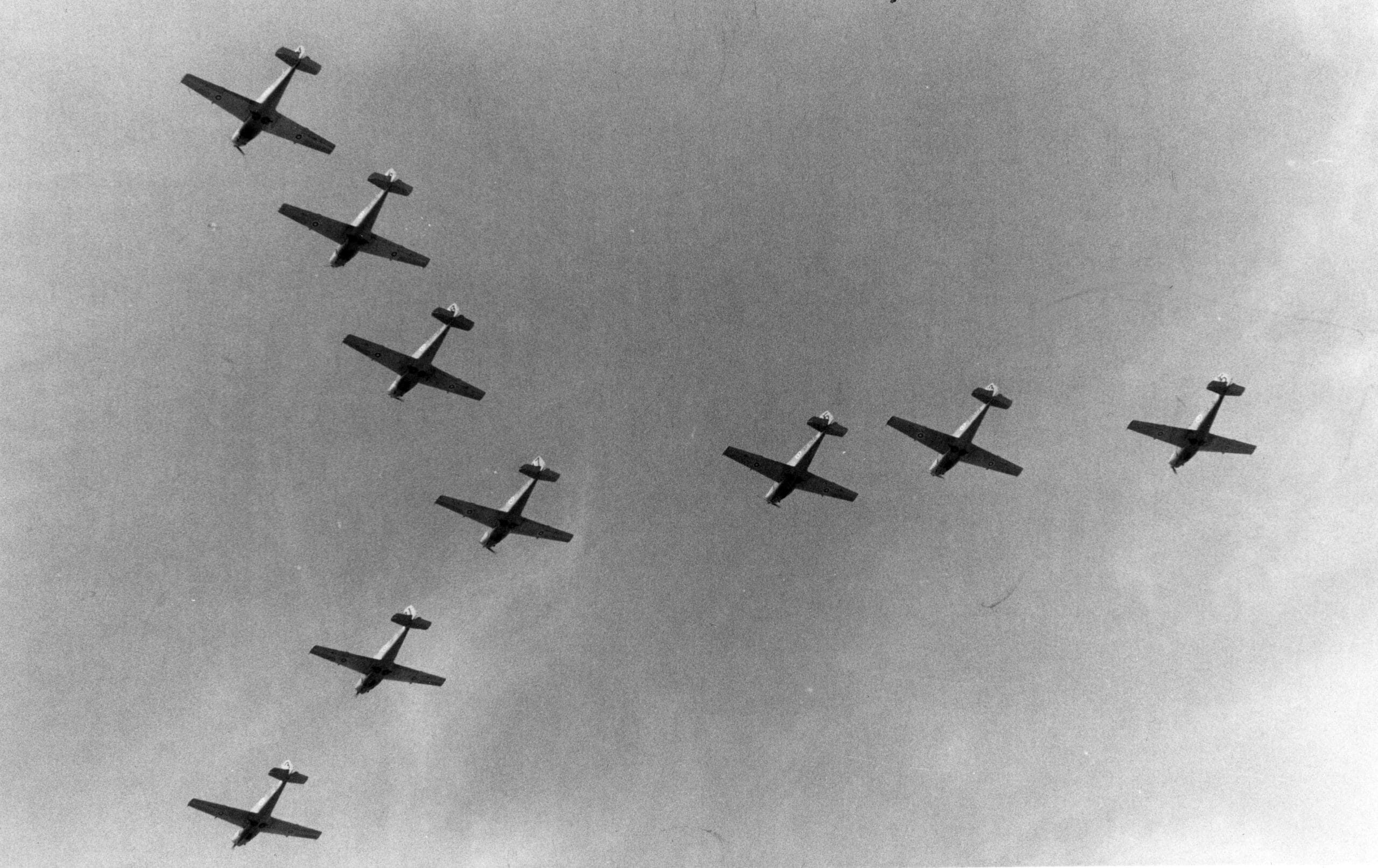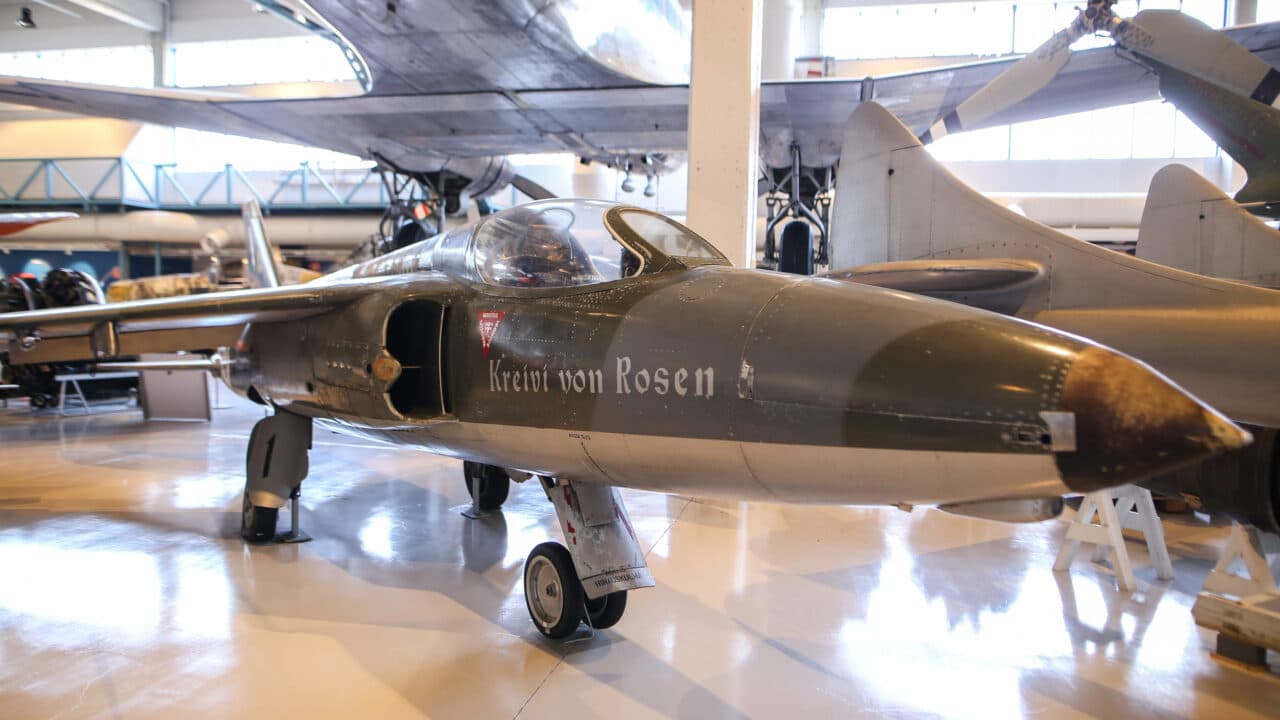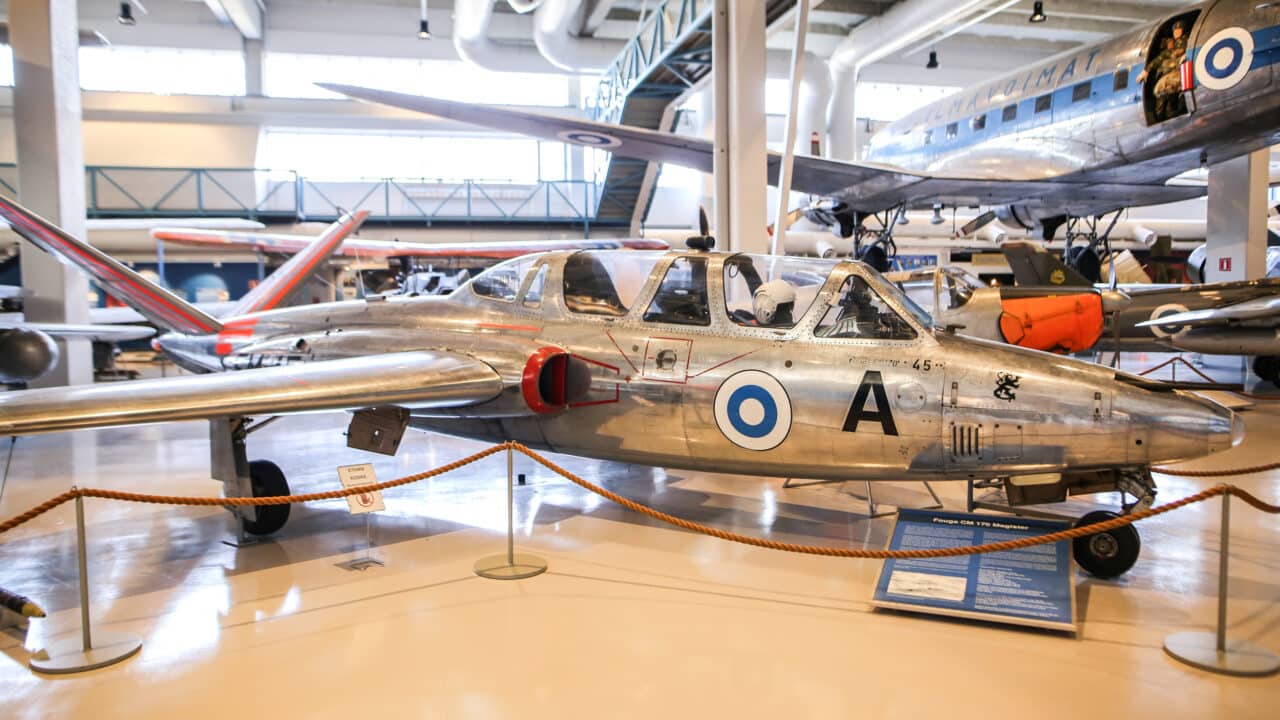The Safir is a Swedish low-wing three-seat primary trainer and liaison aircraft. It is of all-metal construction apart from the control surfaces and wings which are fabric-covered aft of the main spar. The prototype made its first flight in November 1945. In terms of aerodynamics, the Safir is almost identical to the German Bücker Bestmann.
Safirs were sold to Ethiopian, Austrian, Norwegian, Swedish, Finnish and Tunisian air services for training use, and the type was also used for ab-initio commercial pilot training in Belgium, the Netherlands, France and West Germany. Finland acquired 35 Safirs at the turn of the 1950s and 1960s when it became necessary to find a modern replacement to the obsolete biplane Viima and Stieglitz elementary trainers. A purchase decision was made in 1952, but an order was not inked at that time due to financial difficulties. The first two Safirs arrived in Finland in December 1958, and the last aircraft in November 1961.
The Air Forced received 36 Safirs. They were used mainly for primary training at the Air Force Academy in Kauhava, and each Air Force base had a few aircraft for liaison and light transport duties. The Safirs were perfectly suited for their intended use, and the operating costs of the type were low. The type was found very reliable since it had been in service abroad well before being introduced by the Finnish Air Force.
The museum’s SF-2 is the second of the first two Safirs to arrive in Finland. It made its last flight in June 1982, by which time its flight log registered over 6,364 hours and 9,852 landings.
Link copied!
Additional info
Operating time
1958–1982
Manufacturer
Saab, Sweden
Measurements
Wing span 10.60 m; Maximum speed 265 km/h; Length 7.90 m; Height 2.20 m.
Type
Three-seat primary trainer and liaison aircraft
Object number
1678
Location
Main exhibition




